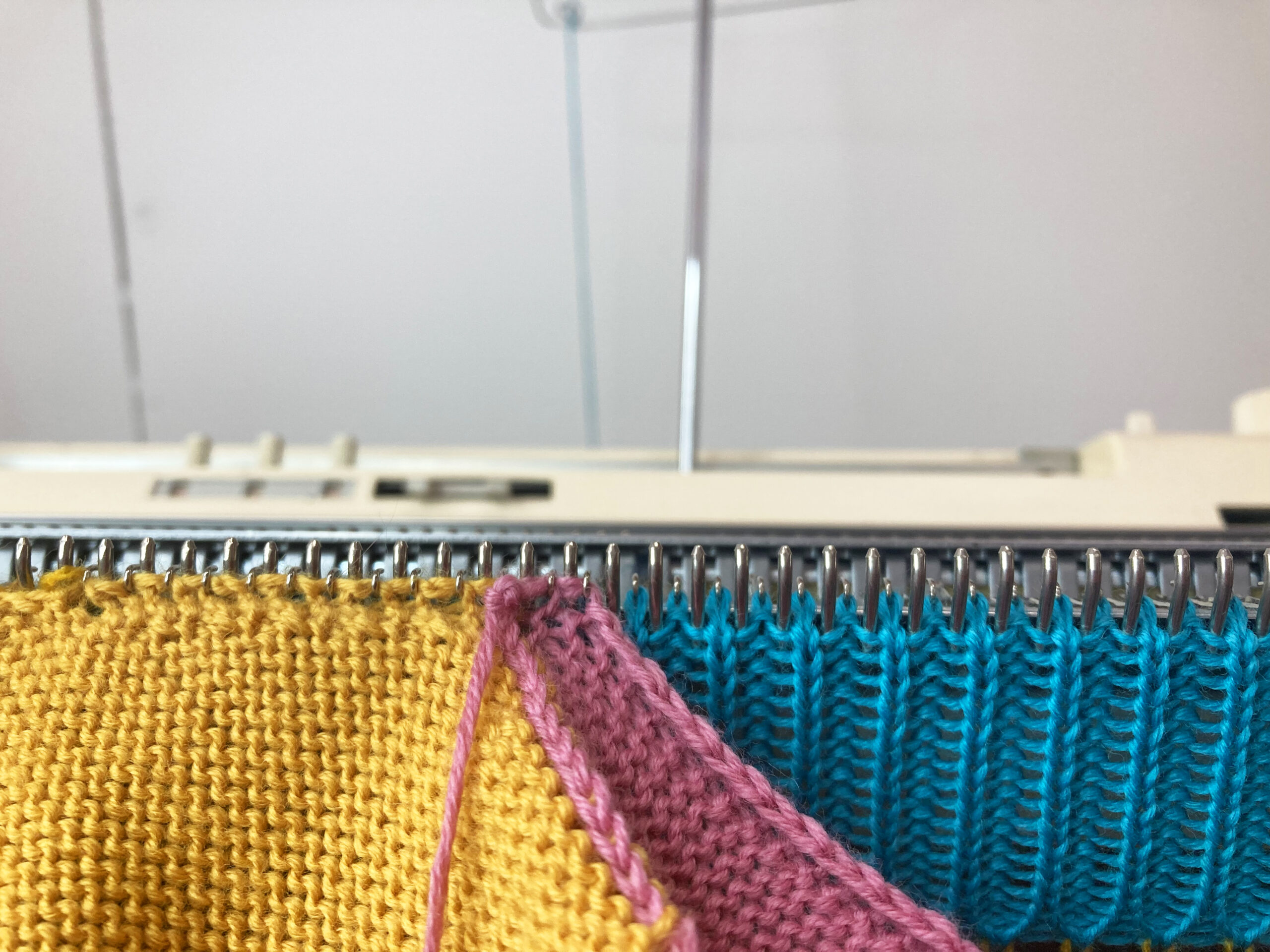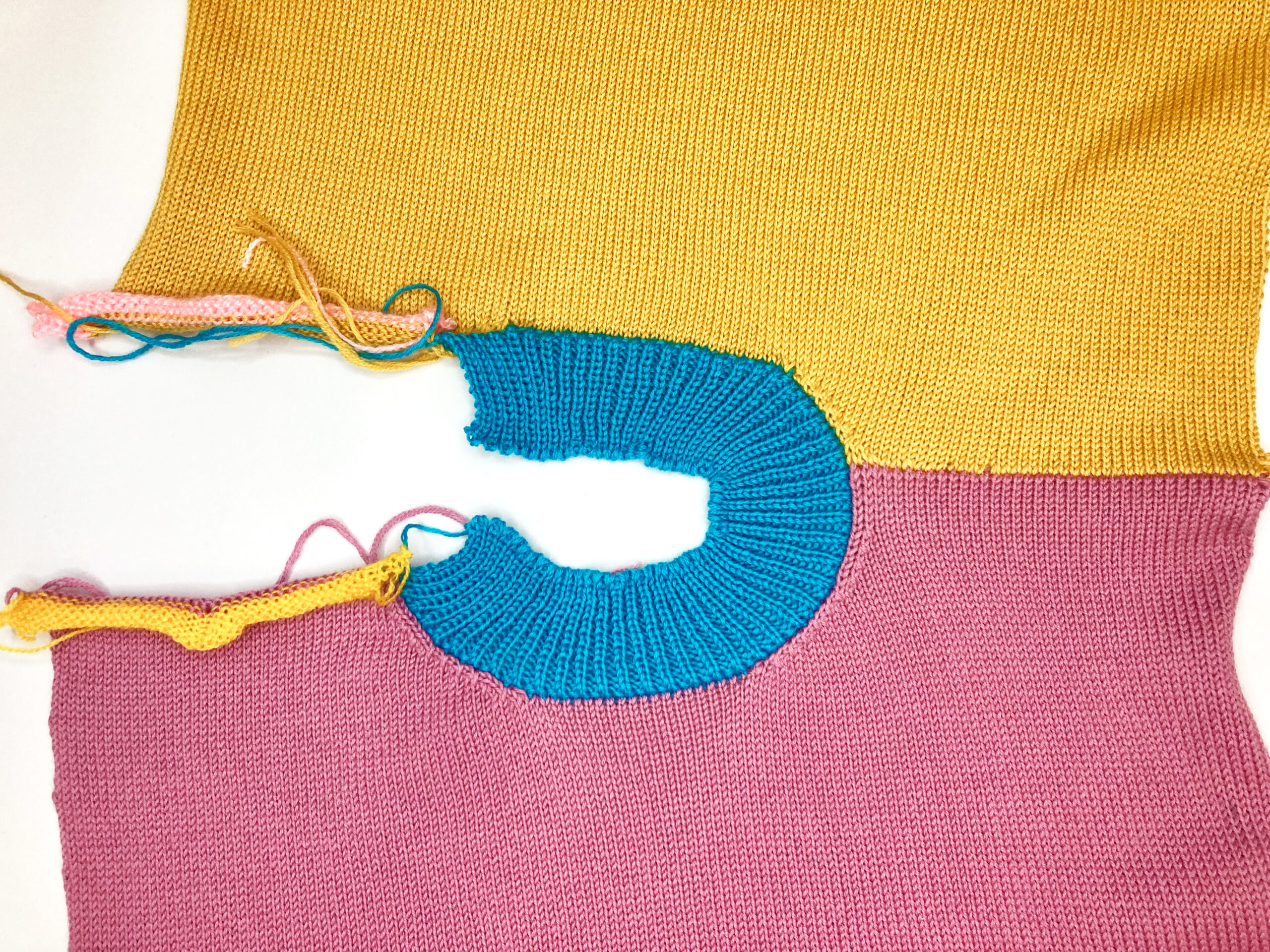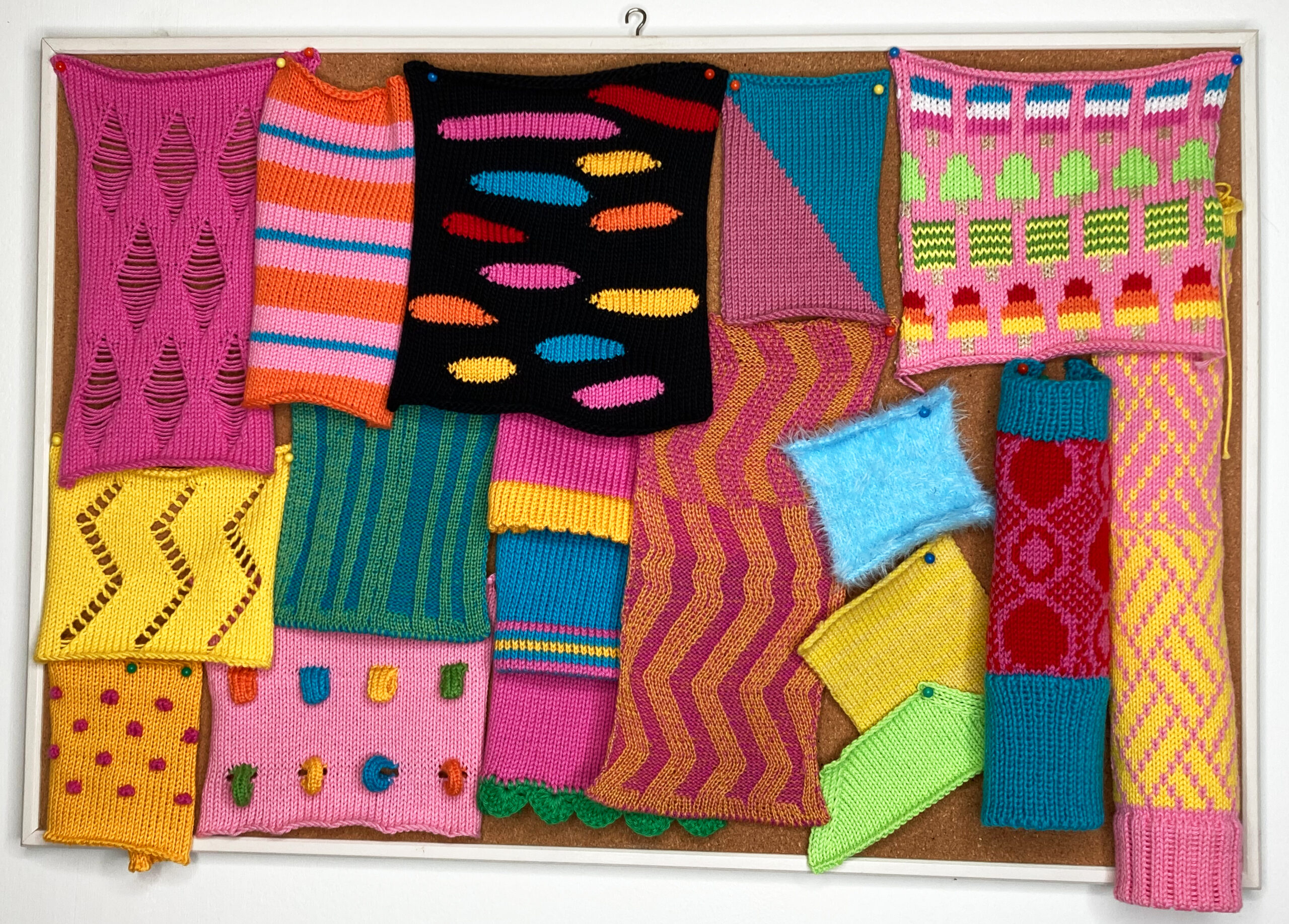United Kingdom
When we last spoke with knitwear designer, maker and lecturer Kandy Diamond back in August 2022, Kandy teased a new project on the horizon as she shared details about her personal practice and her brand ‘Knit and Destroy’. Come April 2023, this project was revealed to be a book about domestic machine knitting, published by The Crowood press Ltd, ‘Discovering Machine Knitting: From deciphering the machine to designing you own’.

As a specialist in domestic machine knitting, Kandy saw this book as an opportunity to make this craft more inclusive and to welcome new, less experienced knitters ‘into the fold’.
‘The purpose of this book is to help demystify machine knitting, starting from the first principles with how the machine works and how stitches are formed, through to shaping garment panels to your desired size and fit’ (Page 7)
Kandy’s personable written voice immediately sets readers at ease, regardless of their skill level. Throughout her book she shares insights into her practice whilst introducing readers to the potential of their own practices too, demonstrated by her opening sentence,
‘Welcome to the work of machine knitting! I have been machine knitting since 2022 and I am here to help you discover this wonderful craft’ (Page 7)
‘Discovering machine knitting’ focuses on the use and potential of standard gauge domestic knitting machines, though some references are made to chunky machines and other types of knitting in order to provide context. It is of course a given, that to complete the projects within the book, a domestic knitting machine is required for the reader. However, for those who might not yet own one, the first few chapters of the book would serve as strong preparatory reading.

The book works chronologically in skill level to facilitate the building and developing of skills and understanding as you read. Diagrams and photos of knitting machines are included throughout, serving as visual illustrations of what is being discussed. For those amongst us who are more visual learners, this is particularly useful.
There is a conversational tone that endears the reader- but don’t be fooled- this is packed with specialist knowledge. This book really is a celebration of knowledge sharing, particularly within the ‘Designer Profile’ chapters. Abbreviations for specialist vocabulary are avoided throughout and a helpful glossary assists readers in getting to grips with new terminology. Kandy has taken care to avoid over complicating things with the language used, ensuring that where descriptions do become technical, they do not become intimidating or overwhelming. Again, the imagery within the book is utilised as a supportive educational tool.
No stone is left unturned, as the book begins by troubleshooting the challenges of buying a second-hand domestic knitting machine. This can be tricky, because so many parts are included (or indeed can be missing) but knowing what a ‘good buy’ vs a ‘bad buy’ it can be difficult when starting out. Kandy explains thoroughly what each part of the knitting machine is and what all the tools do, equipping readers to make sound judgements on their machine purchases.
Machine maintenance and caretaking is also covered within chapter 1, offering detailed troubleshooting tips for caring for a machine, particularly in discussing the importance of measured application of oil on machine parts.
Time is taken to explain the mechanics of the latch needle, creating strong foundational knowledge from which the reader can then start to understand how stitches are formed, and therefore, how different stitch patterns can be created based on changing the needle set up and carriage settings. This is something that is regularly presumed to be inherent knowledge in machine knitting, but these things do need pointing out to new knitters.

The chapter also contains a brief introduction into yarn types and how yarn choices can influence the surface texture of knitted outcomes. Experience with choosing yarn in order to create certain fabric handles is built over time after plenty of practice. But chapter 1 gives as thorough a basic introduction as possible to what to look for and how to make yarn decisions, so that knitters can start as they mean to go on with informed yarn choices.
Within Chapter 2, ‘Getting Started’ there is a particularly clear tension swatch calculations section. This is something that can really ‘scare’ knitters- the mathematical conundrums this process can generate can be off putting. Kandy walks readers through the tension swatch creation process in her conversational yet specialist tone, presenting this task as an entirely achievable learning milestone.
An enticing feature of the book is held within the ‘Designer Profiles’ and ‘Projects’ passages. These punctuate the delivery of technical knowledge throughout the book, providing readers with insight into the professional practices of a variety of knitwear and knitted textile designers. Within the mini projects that Kandy has included, rewarding, achievable outcomes are presented to readers to practice their new found skills on. Starting with a simple scarf design project, readers might be surprised to find themselves capable of completing the simple jumper project by only chapter 3, but Kandy builds these skills in such a way that readers gain confidence and ability.


An Intarsia cushion project later in the book gives opportunity to try out newfound colour work skills, and the final ‘design your own’ project encourages knitters to combine their newfound skills with their own creative ideas and tastes.
‘Simple Shaping’ is the focus of chapter 4, teaching readers how to increase and decrease stitches, as well as how to utilise the potential of partial knitting. Examples of frequency calculation are included, assisting knitters in their planning skills too. Partial knitting for sock shaping is included and readers are invited to try out these skills on the ‘Sour apple single bed socks’ project. The variety of projects included in the book not only provides a great selection for knitters to get stuck into, but it is a celebration of the potential of these often-underestimated manual machines.
‘Colour and Design’ is the focus for chapter 5, and though Intarsia might seem like a leap for beginners- Kandy again builds knowledge gradually yet succinctly, enabling readers to take this next step in their skills journey. Knitting is so often seen as a restrictive output of colour due to its natural ability to turn into something horizontally striped. But as Kandy says, ‘I often think of Intarsia as drawing with yarns: it can take some planning, but the results are limitless’. (Page 103)
With video demonstrations and digital content now so prevalent within the DIY craft world, it is refreshing to come across a current tactile resource that can sit with knitters at their machines and be engaged with, without logging onto a phone or having to watch someone else do it first. This book joyfully and colourfully equips domestic machine knitters with the knowledge they need to have a go themselves and learn through their own practice.
In her afterword, Kandy highlights again the potential of the skills within the book with words of encouragement for her readers, ‘We have only just scratched the surface in terms of design potential for machine knitting. Each technique has endless possibilities, through the use of different yarns, colour combinations and application to different projects.’ (Page 157)

Whether new to knitting or wanting to deep dive into some specific new skills, this is certainly a book to engage with. This book is a brilliant resource for technical information and support as well as creative inspiration and encouragement.
‘Discovering machine knitting’ welcomes people to the craft of domestic machine knitting with open arms.
It is available to buy online now.

Subscribe To Our Newsletter
Join our mailing list to receive the latest news and updates from our team.














